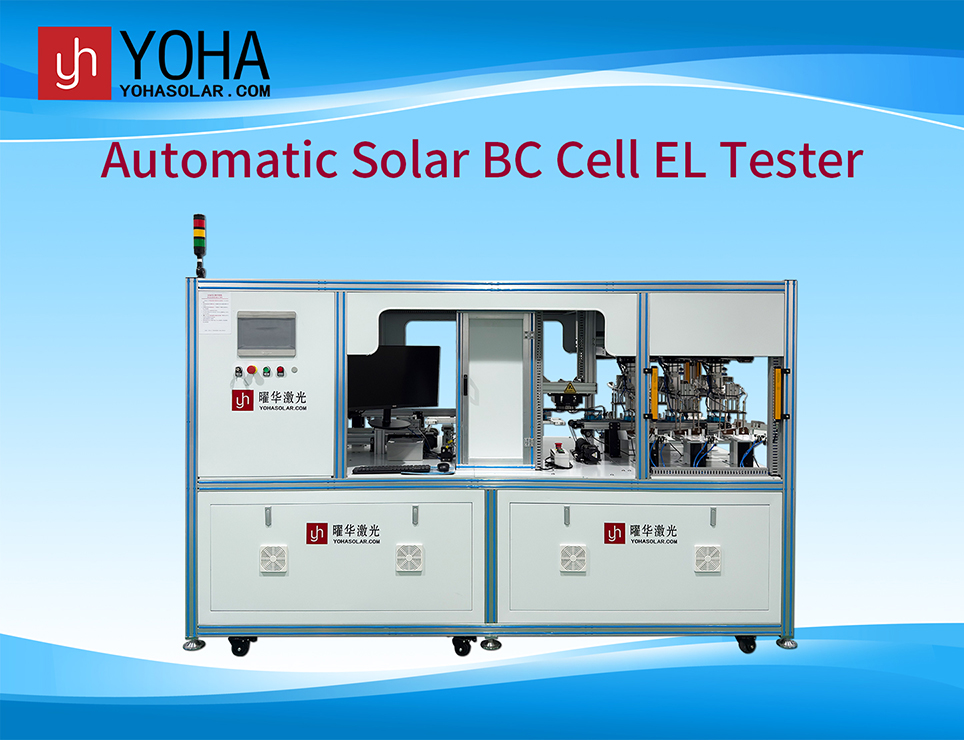Welcome to Wuhan Yoha Solar Technology Co., Ltd!
common problem
Site Map
Language:
 Chinese
Chinese
 English
English
Welcome to Wuhan Yoha Solar Technology Co., Ltd!
common problem
Site Map
Language:
 Chinese
Chinese
 English
English
In the wave of accelerated global transition towards clean energy, the photovoltaic (PV) industry has become a cornerstone of the renewable energy sector. PV inspection equipment companies, serving as the unsung "guardians of quality" within the industrial chain, have technical capabilities and service competencies that directly determine the performance accuracy, reliable lifespan, and safety baseline of PV products. They are the core support driving the industry's leap from scale expansion to quality upgrade.
The core value of PV inspection equipment companies permeates the entire lifecycle of the PV industry. In the manufacturing phase, from silicon material purity testing and wafer defect screening to cell photoelectric performance testing and module packaging quality assessment, inspection equipment acts like precise "medical examination instruments." Utilizing technological means such as Electroluminescence (EL), Photoluminescence (PL), and I-V curve analysis, they capture various parameters from micro-defects to macro-performance. This process is not only essential for screening qualified products but also provides data support for production process optimization, helping to improve product yield and power generation efficiency. Entering the power station construction and operation & maintenance phase, the portable inspection instruments, environmental monitoring systems, and remote diagnostic tools provided by inspection equipment companies enable full-process control from installation acceptance and routine inspection to fault localization, ensuring the stable operation of PV systems throughout their 25-year design lifespan.

Technological innovation is the core competitiveness of PV inspection equipment companies. With the iterative upgrades of high-efficiency cell technologies like PERC and TOPCon, industry requirements for inspection precision have reached new heights. By integrating advanced sensor technology and intelligent algorithms, inspection equipment companies have achieved a leap from "qualitative detection" to "quantitative analysis," enabling precise measurement of key parameters such as minority carrier lifetime, film thickness, and sheet resistance, with errors controlled at industry-leading levels. Simultaneously, intelligence and automation are becoming mainstream trends in technological development. Equipment integrated with AI visual inspection can automatically identify defects like cracks and black spots and perform classification statistics. When paired with cloud platforms, it enables real-time upload and in-depth analysis of inspection data, significantly reducing human intervention and error rates. To adapt to diverse scenarios like distributed PV and Building-Integrated Photovoltaics (BIPV), equipment is also trending towards miniaturization and portability, with the weight of some portable testers dropping as low as 5 kilograms, balancing high precision with field operation flexibility.
Driven by both policy and market forces, PV inspection equipment companies are entering a golden period of development. Domestically, policies such as the "Several Opinions on Promoting the Healthy Development of the Photovoltaic Industry" explicitly propose accelerating the construction of inspection and certification systems and promoting the localization of inspection equipment, providing policy support for industry development. In the international market, policies like the EU's Net-Zero Industry Act and the US IRA Act are driving continuous growth in global PV installations. The global PV inspection equipment market size reached USD 102 million in 2024 and is projected to increase to USD 187 million by 2031, with a compound annual growth rate (CAGR) of 9.2%. The expansion of market demand is driving increased technological investment. In 2024, the industry's overall R&D investment accounted for 6.5% of revenue, a figure expected to rise further to 7.1% in 2025, forming a virtuous cycle of "demand driving innovation, innovation enabling demand."
Against the backdrop of globalization and industrial synergy, PV inspection equipment companies are achieving multiple breakthroughs. Localization substitution has yielded significant results. Domestic companies, leveraging technological iteration and cost advantages, are gradually breaking the monopoly of foreign brands in the high-end market. China's PV inspection equipment export value reached RMB 370 million in 2024, a year-on-year increase of 18.6%, demonstrating strong international competitiveness. Regarding industrial chain synergy, through deep collaboration with upstream raw material enterprises, midstream manufacturers, and downstream power plant operators, inspection equipment companies are building a closed-loop system of "demand transmission - technology R&D - scenario application." Their developed multi-functional integrated equipment can combine various functions like IV testing, EL inspection, and PL testing, adapting to the inspection needs of different stages.
Looking ahead, PV inspection equipment companies need to continue their efforts in technological depth and scenario adaptation. As new cell technologies like perovskite move towards commercialization, inspection equipment must tackle new challenges such as spectral response testing for multi-junction cells and mechanical performance testing for flexible modules. In the O&M field, the integration of drone-mounted inspection equipment and AI fault prediction systems will become mainstream, enabling a transition from "reactive maintenance" to "proactive warning." Simultaneously, energy-saving, environmentally friendly design and global service capabilities will become crucial dimensions of corporate competition. This involves both reducing equipment energy consumption through optimized circuit design and establishing global technical support networks to adapt to standards and needs in different regions.
As the cornerstone for the high-quality development of the PV industry, the technological evolution and service upgrading of PV inspection equipment companies are directly related to the utilization efficiency and promotion process of clean energy. Within the grand narrative of the "Dual Carbon" goals and global energy transition, these enterprises focused on precision and reliability are using their intangible inspection technologies to build a solid quality barrier for the sustainable development of the photovoltaic industry.
keywords:TOP
18086473422
MESSAGE
